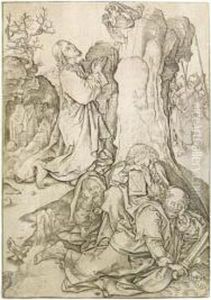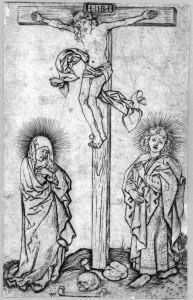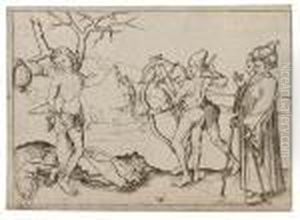Wenzel Von Olmutz Paintings
Wenzel von Olmütz, also known as Wenceslaus of Olomouc, was a Moravian artist whose life and work are not extensively documented, and thus much of what is known about him is pieced together from the limited records that exist. Born around 1440-1445 in the town of Olomouc in Moravia, then part of the Kingdom of Bohemia and now in the Czech Republic, Wenzel was active during the late Gothic period, which in Central Europe extended into what is commonly referred to as the Northern Renaissance.
Wenzel's artistic contributions are primarily known through his work as a sculptor and woodcarver. He is often associated with the high period of Gothic art, which was characterized by its attention to detail, intricate craftsmanship, and religious subject matter. Although there are few surviving works conclusively attributed to him, those that are, exhibit a keen attention to naturalism combined with a certain grace and delicacy, which was typical of the period's transition from medieval to early modern artistic sensibilities.
The exact details of Wenzel's training and early career are obscure, but he is believed to have traveled or been influenced by the work of other artists in the region, which was a common practice of the time. It is known that he was active in Olomouc, where he likely maintained a workshop. His most notable work, which attributes to his fame, is the Olomouc Altarpiece, created for the Church of Saint Maurice in Olomouc. This piece, which showcases his skill in woodcarving, has unfortunately not survived in its entirety.
Wenzel von Olmütz's legacy is that of a regional master whose work reflected the transition of Gothic to Renaissance art in Central Europe. His influence would have been felt among contemporary artists and workshops in Moravia and beyond, contributing to the evolution of sculptural practice in the area. He passed away around 1519, and while his name may not be as widely recognized as some of his contemporaries, his contributions to the art of his region during a pivotal historical moment are still acknowledged by art historians and scholars of the Gothic period.


